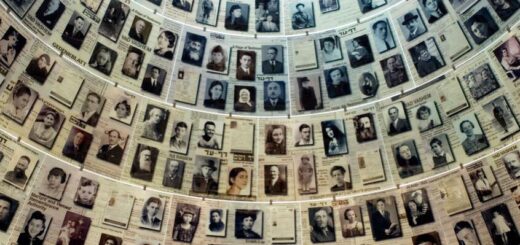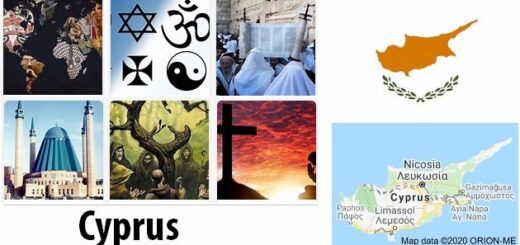Mass Media in Western Asia
According to Countryaah, Western Asia is the west part of Asian continent. This page lists and introduces major newspapers in the countries of Cyprus, Georgia, Israel, Jordan, Lebanon, Oman and Yemen.
Mass media in Oman
The media image in Oman is made up of both state and private media, but at the same time an extensive public control of the media, despite the freedom of the press guaranteed by the Constitution. Both traditional and new (digital) media are subject to censorship and monitoring.
The first regular publishing newspaper in Oman was al-Watan, which was launched in 1971. The newspaper is still published and is the country’s largest. A total of six daily newspapers are published, four of which are in Arabic and two in English. The largest English language is The Oman Daily Observer. There are also a number of magazines published.
Radio was introduced with the establishment of Radio Sultanate of Oman and Radio Salalah, both in 1970. The state radio station is Radio Oman. The first private radio station was launched in 2007; later several have joined. The BBC has a radio station for its international programs on Masirah Island.
Television started with the creation of Sultanate of Oman Television, which started broadcasting from Muscat in 1974 and from Salalah in 1975. Oman TV is the national television channel, but there is also a private, Majan TV, which broadcasts from Muscat. Broadcasts from foreign satellite stations are received in Oman.
Radio and television are about as widespread. Since 1997, the Internet has been expanded, and more than half of Oman’s residents are affiliated. The use of social media is widespread. The authorities are controlling the internet and have blocked some websites.

Mass media in Jordan
Jordanian media is not considered particularly free as it is subject to state control. The same applies to the Internet where the regime reserves the right to censor certain websites.
The most important newspapers are Ar-Rai, Ad-Dustour and al-Ghadd. The Jordan Times is the country’s largest English-language newspaper.
The state radio and television company Jordan Radio and Television Corporation (JRTV, founded in 1968) is funded with direct grants, licensing revenue and advertising. Television broadcasts started in 1968, and there are now two channels, one with English and French broadcasts, and one with Arabic.

Mass media in Yemen
Four daily newspapers are published, in addition to a number of weekly newspapers. The three largest are Ath-Thawra (circulation approx. 110,000), Al-Jumhuriya (circulation approx. 100,000) and Ar-Rabi Ashar Min Uktubar (circulation approx. 20,000) which is published in Aden. After the 1994 civil war, the former free press was subject to severe restrictions, and several newspapers went in. A few new newspapers with faithful editors were later started.
The two former Yemeni broadcasting companies were merged in 1990 into one state broadcasting company, the Yemen Radio and Television Corporation. It broadcasts in two radio channels and two television channels. Television broadcasts started in 1975.

Mass media in Israel
Press
Tel Aviv is the center for newspaper publishing in Israel. It publishes around 20 daily newspapers, most of them in Hebrew. Newspapers are also published in English, French, German, Polish, Hungarian, Russian, Yiddish and Arabic. Newspapers are not published on the Sabbath (Saturday), but the newspapers that come out Friday afternoon often have weekend vouchers and significantly larger circulation than the newspapers on the weekdays. Due to the size of the country, all the newspapers can be called national newspapers.
Most morning newspapers are related to religious or political groups. The most influential is Ha’aretz (founded in 1918), politically independent, with a circulation of 72,000 on weekdays and close to 100,000 on weekends. Most readers have the independent afternoon newspapers Yedioth Ahronoth (founded in 1939, circulation about 350,000, 600,000 on weekends) and Ma’ariv (founded in 1948, circulation 150,000, 250,000 on weekends). All of these are published in Tel Aviv. In addition, the English-language newspaper Jerusalem Post (founded in 1932, circulation about 15,000, 40,000 at weekends) is often cited in foreign press; it has an international weekly edition (circulation approx. 40,000) distributed to over 100 countries. The financial newspaper Globes (founded in 1983) is published in English in Rishon le Zion five days a week with a circulation of approx. 45 000.
Most newspapers rely on financial support from political parties, religious groups or the state, and for that reason, Israeli press has been criticized for being relatively unrelated. In total, the daily press has a circulation of approx. 500,000-600,000. In addition to the daily press, there are several weekly and monthly magazines. The free newspapers have also started to take hold in Israel. The first, Yisraeli, was founded in 2006 and in 2008 had a circulation of approx. 180,000. It was later followed by Yisrael Hayom and Metro (both founded in 2007).
Several smaller Palestinian newspapers are published in the occupied areas of Jerusalem and the West Bank. They are censored, and some have been closed following various charges by Israeli authorities.

Mass Media in Lebanon
During the civil war that lasted from the mid-1970’s to the early 1990’s, the Lebanese press naturally had major problems. But even as the civil war raged on, a dozen newspapers and magazines managed to keep operations going. Now the number of daily newspapers is up to around 40. The press in Lebanon has traditionally had great freedom compared to other countries in the Middle East, and Beirut has long been an important base for foreign press people, except during the period when outlying Muslim groups took foreign journalists and diplomats like hostages.
The three largest newspapers are Al-Hayat (2004 edition: 196,800), An-Nahar (50,000) and As-Safir (50,000). Since the economic and political elite in the country have traditionally been French-speaking, the French-speaking part of the press has had a great influence. The most important French-language newspapers are Le Soir (16,500), L’Orient-Le Jour (23,000) and Le Réveille (10,000).
The state broadcasting company Radio Liban, founded in 1937, has two-channel radio broadcasts in Arabic, Portuguese, Armenian, Spanish, French and English. The commercial television station Télé-Liban (TL, founded in 1959) broadcasts programs in Arabic, French and English in three channels. There are a large number of private radio and television channels in the country, but in 1996 the government decided to impose stricter restrictions on private broadcasting.

Mass media in Cyprus
9 Greek and 8 Turkish daily newspapers are printed, as well as a number of Greek and Turkish weekly newspapers. Largest is the Greek daily newspaper Phileleftheros, which is published in Levkosia (founded in 1955, edition 2004: 28 100).
Cyprus received public broadcasting in 1952 and television in 1957. In both the Greek and Turkish parts of the country, radio and television programs are broadcast in Greek, Turkish, English, Armenian and Arabic. This is under the auspices of a Greek Cypriot company (Cyprus Broadcasting Corporation, CyBC), which broadcasts in three radio channels and two TV channels, financed through the electricity bill and advertising, and a Turkish-Cypriot broadcasting company (Bayrak Radio & TV Kompani, BRTK) with Radio Bayrak (founded in 1963) and Bayrak TV (founded in 1976). Greek television (ET1) has been broadcast from satellite to Greek Cypriots and Turkish television (TRT) to Turkish Cypriots from 1991. Private broadcasting was allowed in 1990 and private television in 1992. The first private television channel (O Logos) was started in 1992 by the Greek Orthodox Church. The British military forces in Cyprus have been operating a broadcasting company (British Forces Broadcasting Service, Cyprus) since 1948 in Akrotiri. It now broadcasts in two radio channels and one TV channel.

Mass Media in Georgia
Georgia has approx. 900 daily newspapers and 40 journals. The most important newspapers are Georgian-language, but newspapers are also published in Russian, Armenian, Abkhazian and Ossetian. The newspaper Sakartvelo (Georgia) is published by the Georgian National Assembly. In addition, an English-language daily newspaper (Georgian Messenger) and three weekly newspapers (The Financial, Georgia Today and Georgian Times) are published. The independent weekly newspaper Respublika (Republic) has a circulation of approx. 40,000. Svobodnaja Gruzija (Free Georgia) with a circulation of about 5000, is the largest Russian-language newspaper.
Georgia’s state radio has had broadcasts in Georgian and Russian since 1927, as well as regional broadcasts for Abkhazia, Adjaria and South Ossetia. The state broadcaster has two radio and two television channels; of the latter is a Georgian and a Russian, which mainly conveys Russian television from Moscow. In addition, there are several independent stations.



